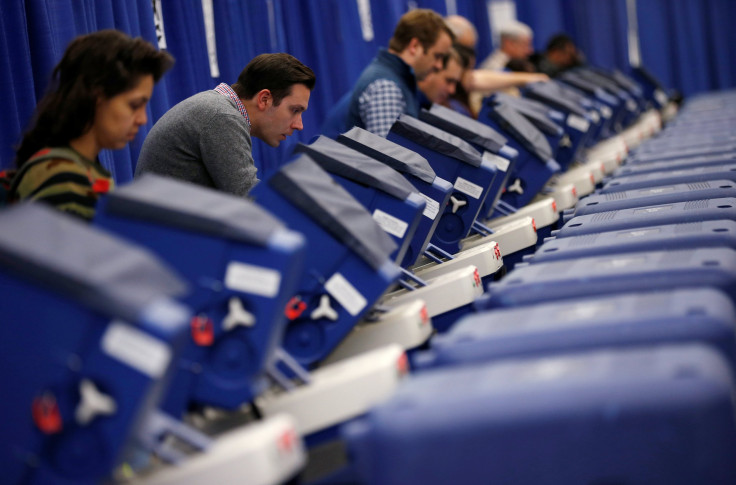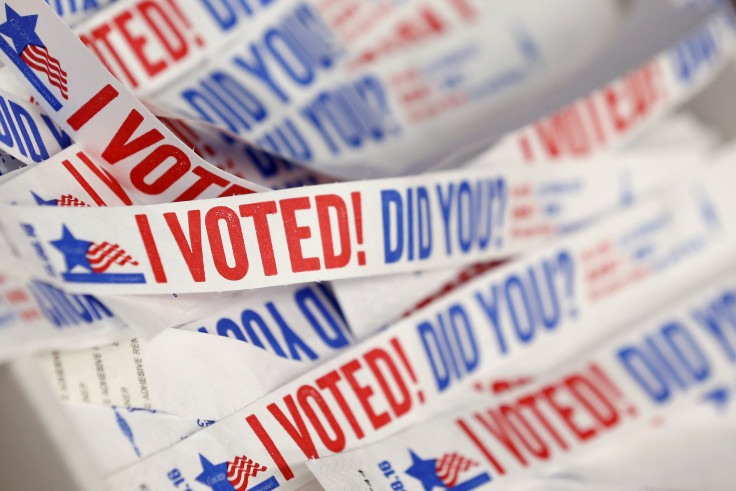What's On My Ballot? Here's Where To Find Out What You'll Be Voting For Election Day
It’s a presidential election year and that means more choices than in years when only down-ticket races are in question. Election officials are bracing for a bigger turnout Election Day Nov. 8 than in off-year elections.
Federal government races top the ballot in every state. Every ballot will list the presidential/vice presidential candidates at the top: Hillary Clinton/Timothy Kaine (D), Donald Trump/Mike Pence (R) and Gary Johnson/William Weld (Libertarian). Jill Stein/Ajamu Baraka (Green) will be on the ballot in 45 states and the District of Columbia. The order may vary and some states may have additional candidates.
The rest of the ballot depends on where you live. To see what your full ballot will look like, check here.
A third of the country — 34 states — will also be voting for a U.S. senator: Alaska, Alabama, Arkansas, Arizona, California, Colorado, Connecticut, Florida, Georgia, Hawaii, Iowa, Idaho, Illinois, Indiana, Kansas, Kentucky, Louisiana, Maryland, Missouri, North Carolina, North Dakota, New Hampshire, Nevada, New York, Ohio, Oklahoma, Oregon, Pennsylvania, South Carolina, South Dakota, Utah, Vermont, Washington and Wisconsin. Find your U.S. senator here.
The entire U.S. House of Representatives is up for election. Find your congressman here.

Next come the more local races.
Some states will be voting for governor and other statewide elected officers. Twelve states will be electing governors: Delaware, Indiana, Missouri, Montana, New Hampshire, North Carolina, North Dakota, Utah, Vermont, Washington and West Virginia. Voters also will be selecting members of their state legislators.
Thirty-two states will fill 75 seats on their supreme courts. Four states — Alabama, Louisiana and Texas — hold partisan races for their high courts; 16 states — Arkansas, Georgia, Idaho, Kentucky, Michigan, Minnesota, Mississippi, Nevada, North Carolina, North Dakota, Ohio, Oregon, Washington, West Virginia and Wisconsin — hold nonpartisan elections; 12 states — Alaska, Arizona, Colorado, Florida, Iowa, Kansas, Maryland, Missouri, Nebraska, Oklahoma, Tennessee and Wyoming — hold retention elections, and one state — New Mexico — hold both retention and partisan elections. Voters also will select judges for lower courts.
In some states, county offices also are up for election as are various boards.
All 50 states also will ask voters to decide various issues ranging from legalizing marijuana for medical or recreational use to raising the minimum wage to establishing a single-payer healthcare system to sequestering certain forms of revenue like gasoline taxes for specific purposes so lawmakers can’t dip into the cookie jar.
Now that you know what’s on the ballot, find your polling place here.

© Copyright IBTimes 2025. All rights reserved.






















